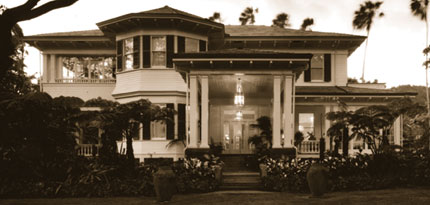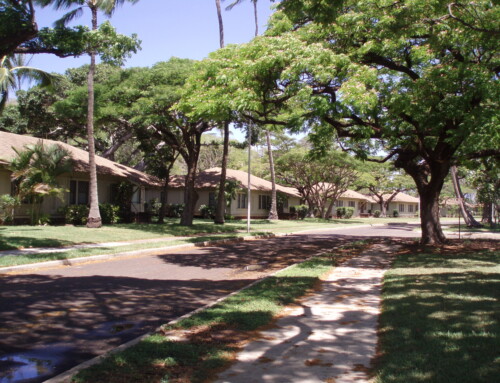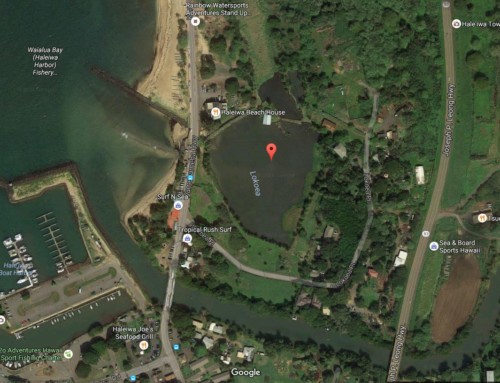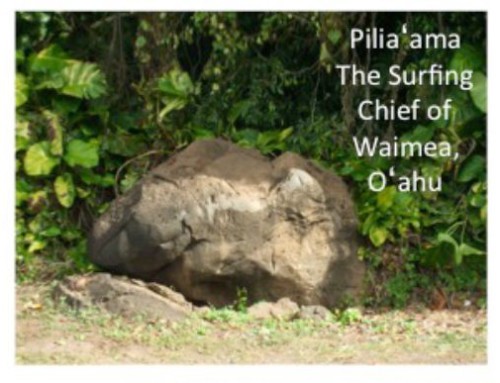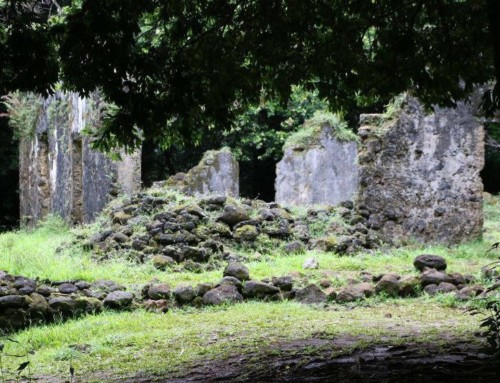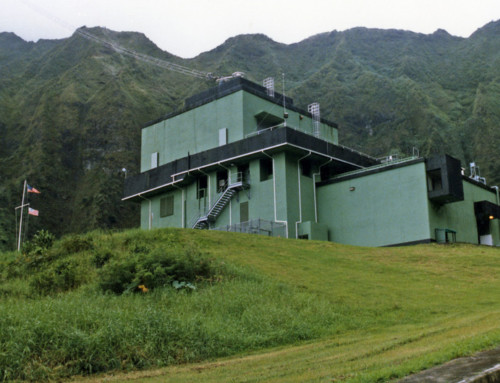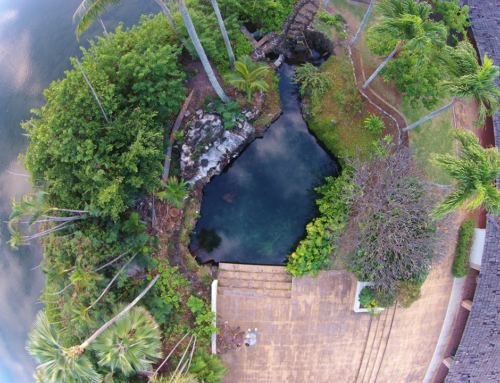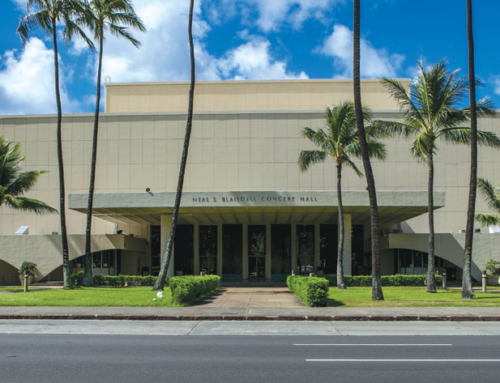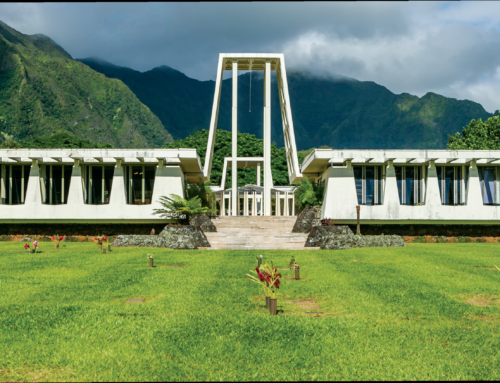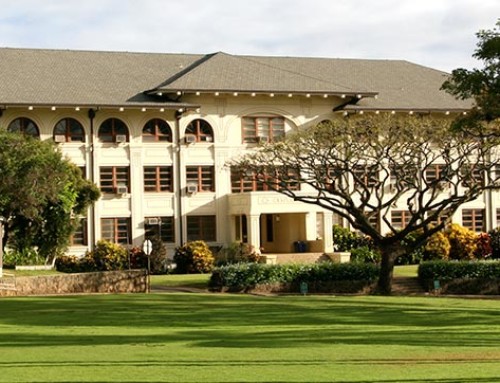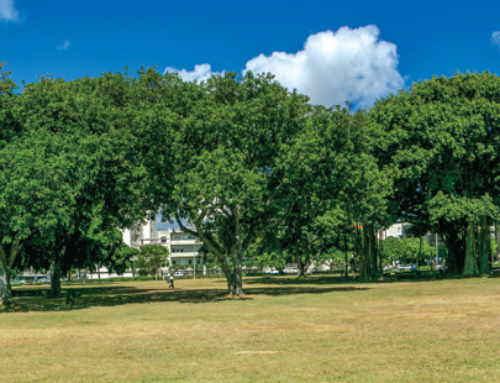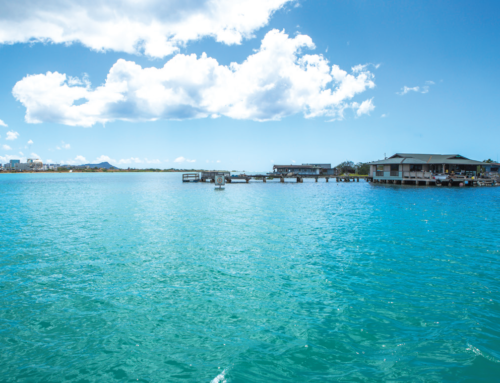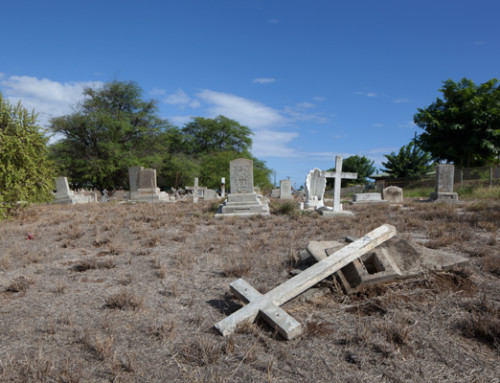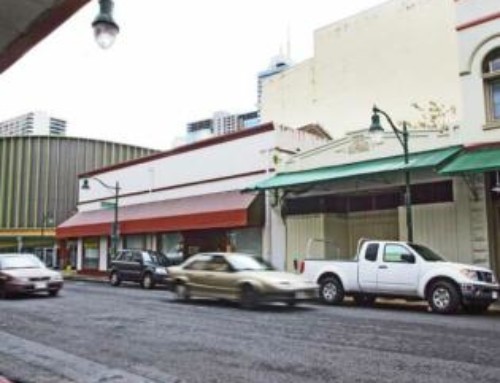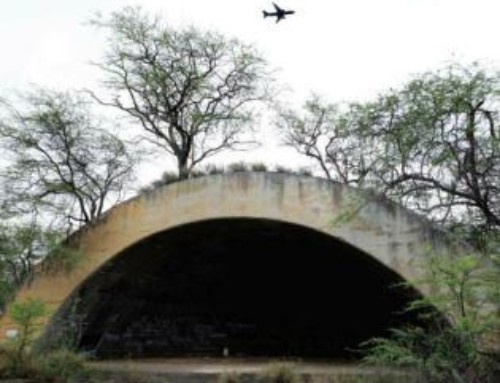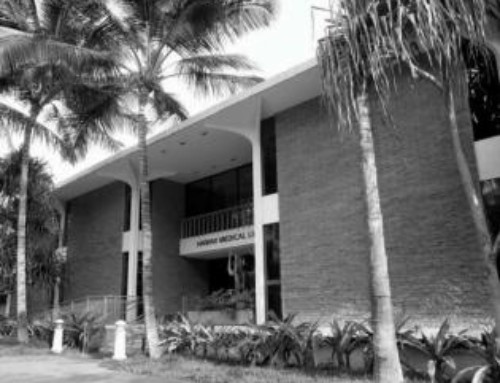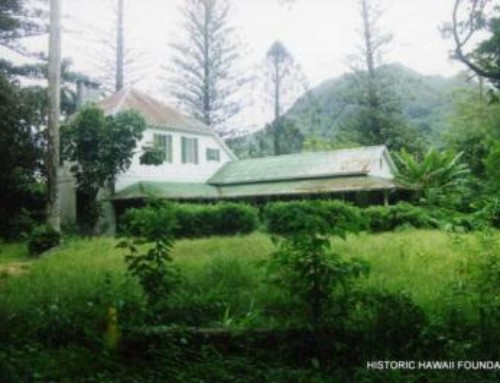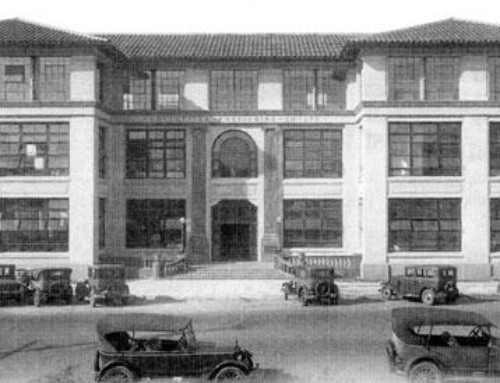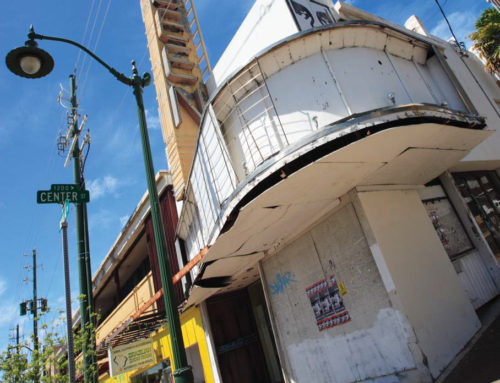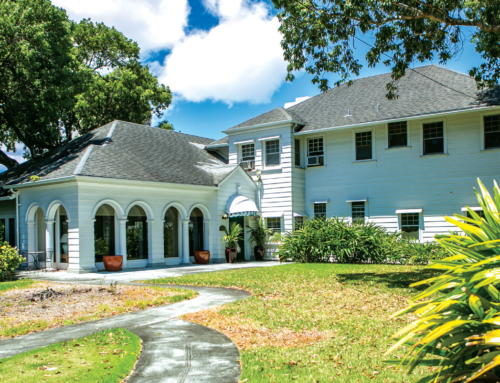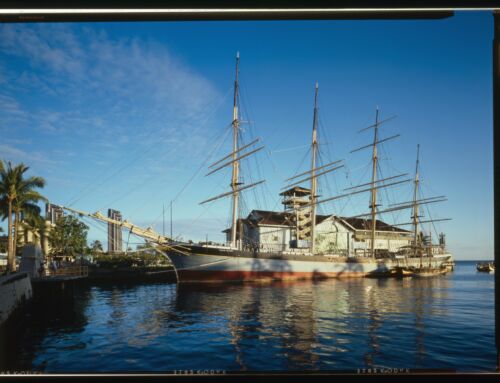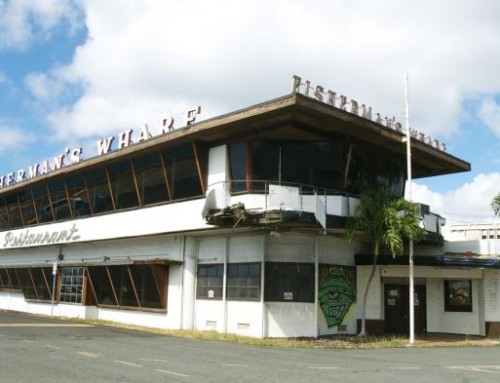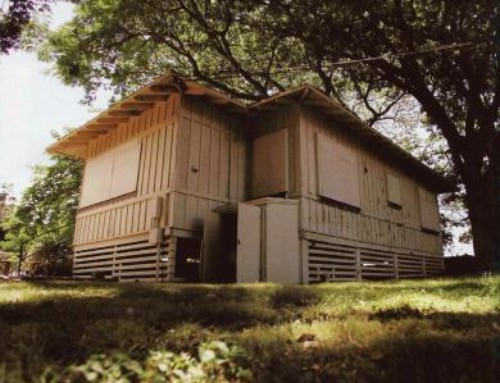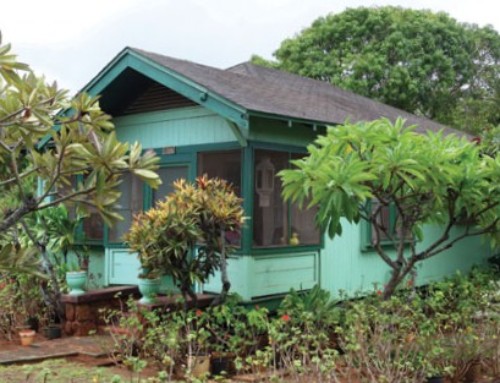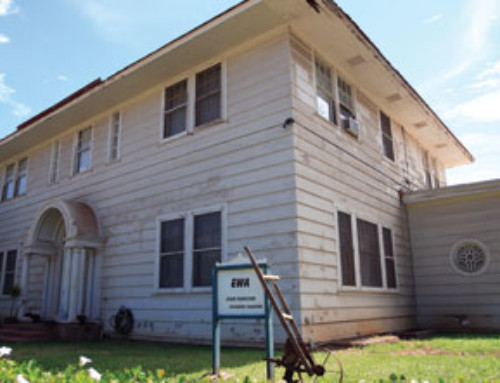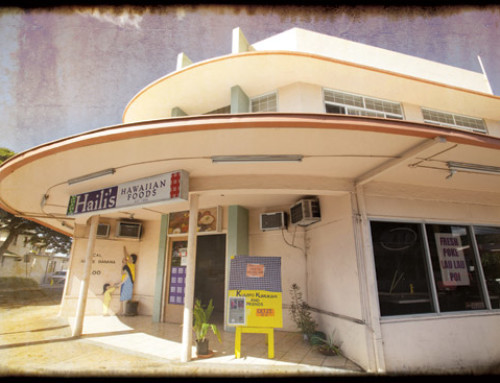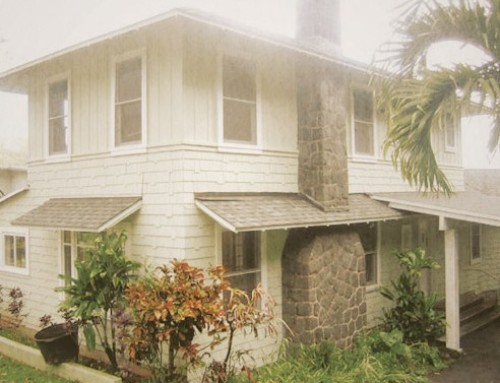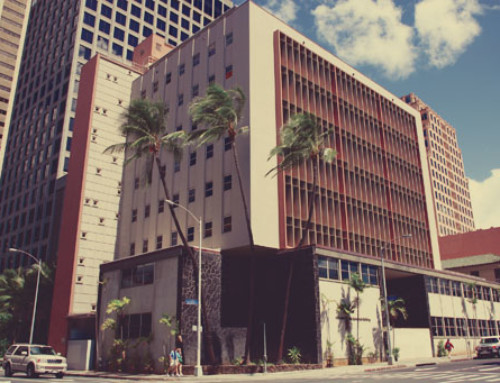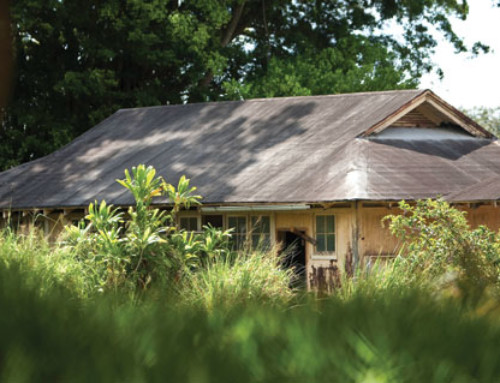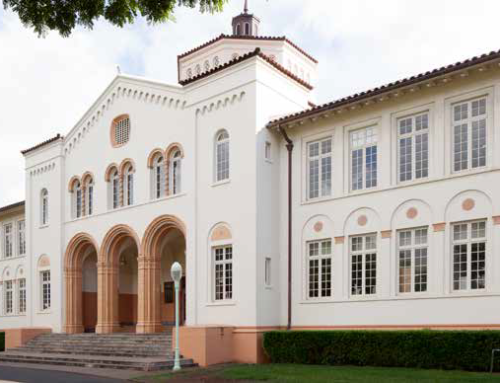Photos: Courtesy of Augie Salbosa
Article Written By: Michael Keany, HONOLULU Magazine
What is it?
A stately, 5.7-acre estate in the heart of Nu‘uanu, this property is one of the last great Honolulu estates of the glamorous Big Five era. The Classical Revival house was built in 1905 by George Rodiek, of H. Hackfeld and Co., which later became Amfac Inc., and the estate became a hub of high society under the ownership of Henry Alexander Walker, president of Amfac and the Hawaiian Sugar Planters’ Association. Architect Bob Fox says, “It’s an extraordinary historic asset. It’s a turn-of-the-century Hawaiian estate, and there’s very little like it left on the island, certainly not in central Honolulu.”
What threatens it?
TR Partners, a local firm currently in the process of buying the Walker Estate for more than $10 million from the current owner, Holy-Eye, has applied for demolition permits to make way for new development on the property. “We’re still evaluating it, trying to find the best use for [the property], but as of right now it’s looking like we’re going to bulldoze the whole thing,” says developer Greg Clark.
What can be done?
Although the Walker Estate is on both the National Register of Historic Places and Hawaii’s historical register, neither of these designations offer much legal protection from demolition. It’s private property, and as long as TR Partners does everything by the book, they’re free to do what they want with it. Unless Clark and his partner, Tom Enomoto, decide on a compromise plan that preserves the property’s historic structures, someone would have to swoop in with enough cash to buy the estate. As of this writing, no such wealthy benefactor has stepped forward.
“A lot of the Hawaiian community have asked us to minimize traffic through the site and using this neighboring property for interpretation is one way to do that,” says Yent.
Next, the division of state parks would resurrect dormant plans to combine Keakealaniwahine and Keolonahihi into a single park, updating its master plan and environmental impact statements. “But we have no money to do that now,” says Yent.
Meanwhile, the state is working with a Hawaiian community group to clear brush from the site. Should the state be unable to staff Keakealaniwahine as a fully developed historic park, Yent says the state would be open to working with community groups willing to take on the work.
Historic Hawaii Foundation asked for letters to be sent to the Honolulu Department of Planning and Permitting to oppose a development plan that would demolish the house, carriage house, and the gardens of the historic Walker Estate. In addition, Historic Hawaii Foundation asked for letters to be sent to the State Historic Preservation Division opposing the proposal to remove the property from the State and National Register of Historic Places.


